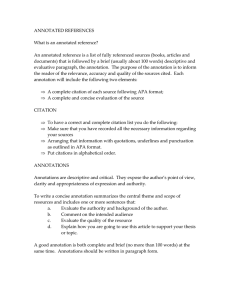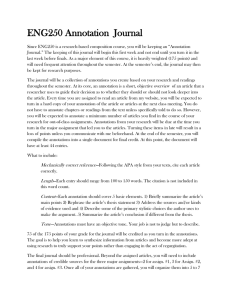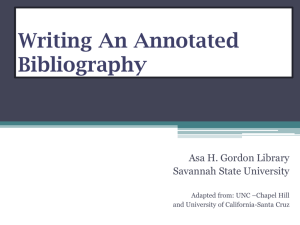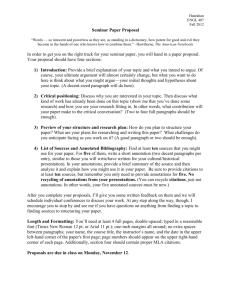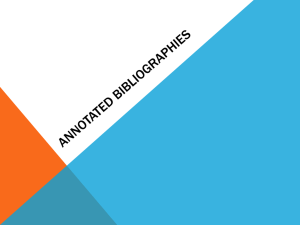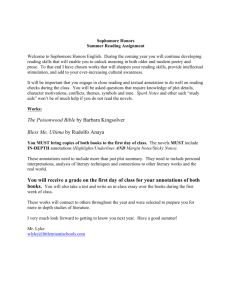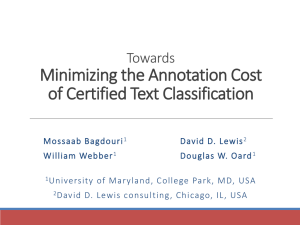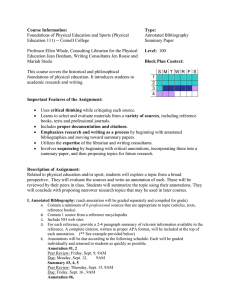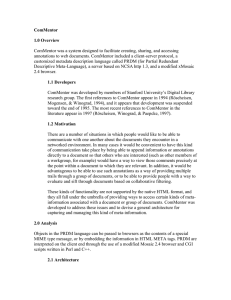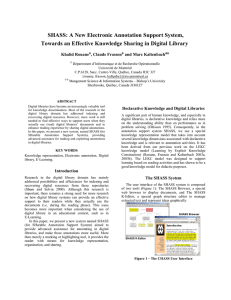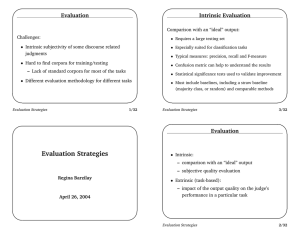How Do I…? Annotate My Bibliography
advertisement
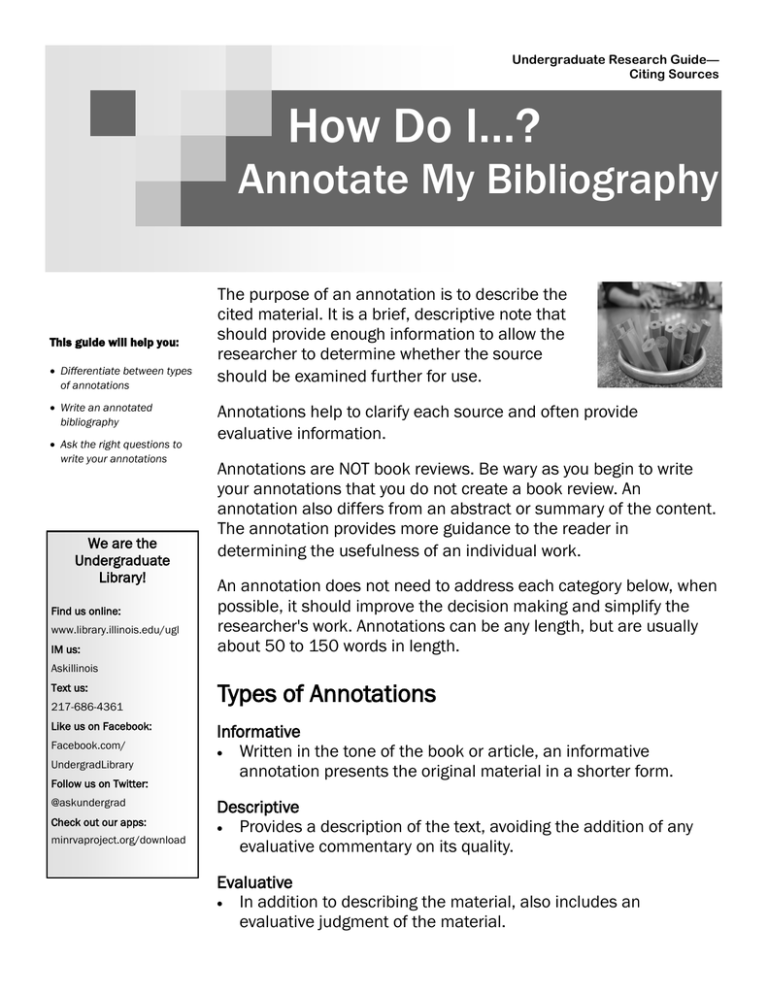
Undergraduate Research Guide— Citing Sources How Do I…? Annotate My Bibliography This guide will help you: Differentiate between types of annotations Write an annotated bibliography Ask the right questions to write your annotations We are the Undergraduate Library! Find us online: www.library.illinois.edu/ugl IM us: The purpose of an annotation is to describe the cited material. It is a brief, descriptive note that should provide enough information to allow the researcher to determine whether the source should be examined further for use. Annotations help to clarify each source and often provide evaluative information. Annotations are NOT book reviews. Be wary as you begin to write your annotations that you do not create a book review. An annotation also differs from an abstract or summary of the content. The annotation provides more guidance to the reader in determining the usefulness of an individual work. An annotation does not need to address each category below, when possible, it should improve the decision making and simplify the researcher's work. Annotations can be any length, but are usually about 50 to 150 words in length. Askillinois Text us: 217-686-4361 Like us on Facebook: Facebook.com/ UndergradLibrary Follow us on Twitter: @askundergrad Check out our apps: minrvaproject.org/download Types of Annotations Informative Written in the tone of the book or article, an informative annotation presents the original material in a shorter form. Descriptive Provides a description of the text, avoiding the addition of any evaluative commentary on its quality. Evaluative In addition to describing the material, also includes an evaluative judgment of the material. How Do I…? Annotation Content When writing annotations, ask yourself the following questions: Author Who is the author? What is his/her occupation, education, experience, etc.? Is the author qualified to write the article? Author Bias Does the author have a bias or make assumptions upon which the rationale of the article research rests? What are they? Purpose What is the purpose for writing the article or doing the research? Relationship to Other Works How does the study compare with similar studies? Is it in tune with or in opposition to conventional wisdom, established scholarship, professional practice, government policy, etc.? Are there specific studies, writings, schools of though, philosophies, etc. which this one agrees or disagrees that one should be aware? Author Conclusion At what conclusion does the author arrive? Information Source Conclusion/Justification What method of obtaining the data, or Does the author satisfactorily justify the conducting the research was employed? conclusion from the research or Is the article (or book) based on opinion experience? or experience, interviews, research, Why or why not? questionnaires, laboratory experiments, standardized tests, etc.? Intended Audience To what audience is the author writing? Significant Attachments Is it intended for the general public, Are there attachments or appendices scholars, policy makers, teachers, such as charts, maps, bibliographies, professionals, practitioners, etc.? photos, documents, tests or Is this reflected in the author’s style or questionnaires? writing or presentation? If not, should there be? How is this evidenced? See examples of annotated bibliographies online: The Writer’s Handbook (writing.wisc.edu/Handbook/AnnBib_content.html) Purdue OWL Online Writing Lab (owl.english.purdue.edu/owl/resource/614/03/) Page 2
